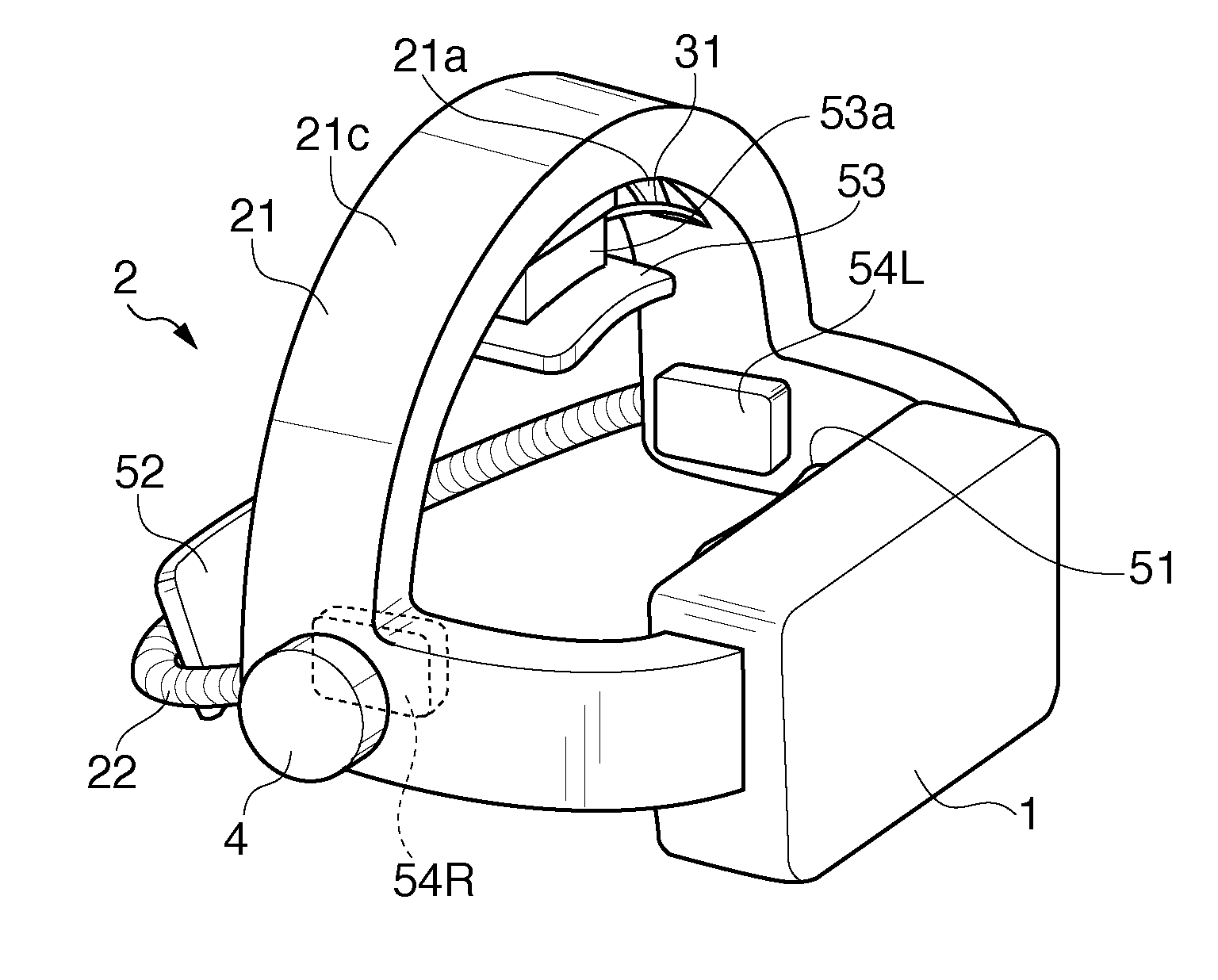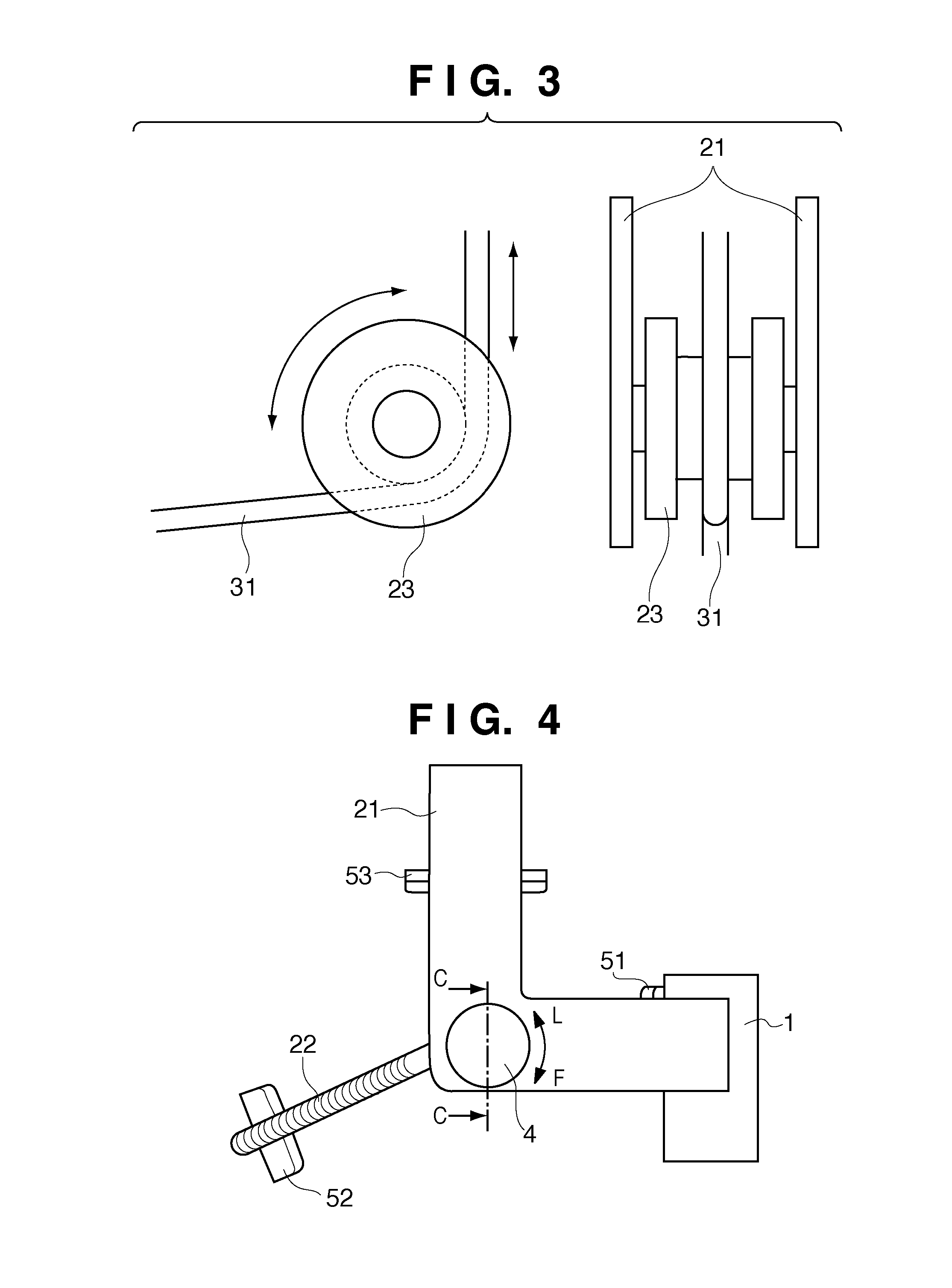Head-mountable apparatus
- Summary
- Abstract
- Description
- Claims
- Application Information
AI Technical Summary
Benefits of technology
Problems solved by technology
Method used
Image
Examples
first embodiment
[0025]The arrangement of a head-mountable display (to be abbreviated as “HMD” hereinafter) according to the first embodiment of the present invention will be described below with reference to FIG. 1. An HMD includes a display unit 1 required to present a video picture to an observer, and a head-mounting unit 2 required to hold the display unit 1 in front of the eyes of the observer. In the display unit 1, a display element which displays a video picture, and an optical system which enlarges the video picture of that display element and guides it to the eyes of the observer are arranged (neither are shown). The display unit 1 is attached to a rigid frame 21. The rigid frame has a shape that extends to right and left temporal regions along a surrounding portion of the head and steps over a parietal region. On the parietal region of the rigid frame 21, holes 21a and 21b required to position (lace) an elongate member such as a wire 31 are formed (see FIG. 2). An extendable elongate memb...
second embodiment
[0044]An HMD according to the second embodiment will be described below with reference to FIG. 8. The same reference numerals in FIG. 8 denote the same components as those described in the first embodiment, and a detailed description thereof will not be repeated.
[0045]Right and left adjustment unit 8R and 8L, which serve as adjustment unit at the time of mounting, are pivotally attached to a rigid frame 21. One end of an occipital wire 32 whose length changes by an operation is attached to the right adjustment unit 8R, and one end of a parietal wire 33 is attached to the left adjustment unit 8L. The occipital wire 32 passes through an elastic tube 22 from the right adjustment unit 8R, and the other end thereof is attached to a left rear portion (at a connecting point M) of the rigid frame 21. On the other hand, one end of the parietal wire 33, whose length changes by an operation, is attached to the left adjustment unit 8L, and the parietal wire 33 passes through a parietal region o...
third embodiment
[0052]An HMD according to the third embodiment will be described below with reference to FIG. 10. The same reference numerals in FIG. 10 denote the same components as those described in the first and second embodiments, and a detailed description thereof will not be repeated. An adjustment unit 9 serving as an adjustment unit is arranged on a parietal region of a rigid frame 21. One end of a wire 34 is attached to the adjustment unit 9 (at connecting point P). The wire 34 passes through a right parietal region of the rigid frame 21 from the adjustment unit 9, then passes through an elastic tube 22 via a holding member 23, and the other end thereof is fixed to a left temporal region in the rigid frame 21 (at connecting point unit S). FIG. 11 is a sectional view of the adjustment unit 9. The adjustment unit 9 incorporates a shaft 21e, which fits with a one-way clutch 44, in the rigid frame 21, and the same mechanism as the right adjustment unit 8R used in the second embodiment. Then, ...
PUM
 Login to View More
Login to View More Abstract
Description
Claims
Application Information
 Login to View More
Login to View More - R&D
- Intellectual Property
- Life Sciences
- Materials
- Tech Scout
- Unparalleled Data Quality
- Higher Quality Content
- 60% Fewer Hallucinations
Browse by: Latest US Patents, China's latest patents, Technical Efficacy Thesaurus, Application Domain, Technology Topic, Popular Technical Reports.
© 2025 PatSnap. All rights reserved.Legal|Privacy policy|Modern Slavery Act Transparency Statement|Sitemap|About US| Contact US: help@patsnap.com



